Vitamin D Foods - Free Printable Lists and Info
Vitamin D foods have gotten a lot of attention lately.
Recent studies indicate that being deficient in Vitamin D may put you at risk of serious health problems including diabetes, heart disease, possible memory loss, and - you guessed it - weight gain.
And here's the kicker: a lot of people (maybe even you) are deficient in Vitamin D. Estimates conflict, but various sources calculate that from 10% to 90% of the population in countries like the United States have a Vitamin D deficiency.
Thus, you may want to start eating more foods high in Vitamin D, to ward off a possible Vitamin D deficiency. Below I've compiled several lists of Vitamin D foods. You can print these lists for free.
There are actually not many foods rich in Vitamin D. Normally that is okay, because your body can make its own Vitamin D when you spend time in sunlight, believe it or not. If you get the proper amount of sun, it's technically not necessary to consume any Vitamin D from food at all.
Sun First, Plus Vitamin D Foods If Necessary
Go out in the sun a bit more if you can. But what if you aren't able to get enough sunlight? This has become a huge problem for modern society.
Many of us rarely go outside. When we do, it's for short periods - to and from the car, then in and out of the store or the office.
Even then, our bodies are usually covered by long clothing. Many people apply sunblock lotion as well.
Note: Sunblock is important to help avoid skin cancer. But it also prevents your body from making Vitamin D.
And, no, your body can't produce Vitamin D from sunlight through a window. Unfortunately the glass blocks the useful UV-B rays.
If you rarely spend time outdoors, it may make sense to include more Vitamin D foods in your diet. That's where the lists below come in handy. They can help you identify foods high in Vitamin D that you might like or want to eat.
Printable Vitamin D Foods Lists
Here are the lists of Vitamin D foods, in PDF format. I've created separate lists based on food type (fish, meat, eggs & dairy, etc.). These lists are free to print and distribute as long as you keep the copyright notice in place.
I compiled this information from the U.S. Department of Agriculture (USDA) report, "Vitamin D (IU) Content of Selected Foods per Common Measure".
Vitamin D in Fish & Seafood - Fish such as salmon and tuna are one of the best sources of Vitamin D in foods.
Vitamin D in Mushrooms - Mushrooms that have been exposed to UV light are an excellent source of Vitamin D.
Vitamin D in Fortified Cereals - Cheerios, Rice Chex, and Wheaties cereals are rich in Vitamin D, for example.
Vitamin D in Meats - Including beef, chicken, lamb, pork, and turkey.
Vitamin D in Eggs & Dairy - The egg yolk contains the Vitamin D.
Here is the full USDA Vitamin D foods report that I examined, in case you're interested: USDA National Nutrient Database for Standard Reference, Release 24: Vitamin D (IU) Content of Selected Foods per Common Measure, sorted alphabetically.
The full list includes a few more foods containing Vitamin D. I didn't make printables for them because most of it is junk food (cake, candy bars, etc.).
QUICK TIP: What if you don't like these foods, or don't think you can eat enough of them? Consider taking a Vitamin D supplement. These products can provide up to 5,000 IU of Vitamin D per capsule or pill. Vitamin D3 Gold by Nutrigold is one popular example.
The USDA apparently left out of this list a few other foods with Vitamin D, such as fortified orange juice. Fortified orange juice may be a viable alternative drink for people who can't digest milk. According to one online database, 1 cup of fortified orange juice provides 137 IU of Vitamin D. That's a significant amount.
Which Vitamin D Foods Should You Eat?
When going through the USDA's Vitamin D foods lists, keep this in mind: Some of the foods the USDA includes are very unhealthy!
Sure, regular eggnog does contain a lot of Vitamin D. But it's also full of fat and calories. Be smart when choosing foods from these lists.
In contrast, fortified skim milk also has a lot of Vitamin D but contains almost no fat. When possible, choose low-fat, low-sugar, low-calorie Vitamin D foods.
Which Foods Contain the Most Vitamin D?
Fish and UV-exposed mushrooms contain the most Vitamin D. Other foods, including cereal, milk, and some juices, can be fortified with Vitamin D (i.e, the manufacturer adds it). Eggs and meat also contain Vitamin D.
But fish and some fish oils (especially cod liver oil) are the kings of the Vitamin D foods. They typically contain twice to ten times as much Vitamin D as many other types of food.
For example, a 3 oz portion of sockeye salmon provides about 450 IU of Vitamin D. A 3 oz serving of beef liver supplies about 1/10th that amount - 40 IU.
How Much Vitamin D Is Too Much?
It is possible to consume too much Vitamin D. Be sure to follow the directions on all labels as well as the advice of your physician.
There is some controversy over the amount of Vitamin D necessary for good health. The Institute of Medicine (IOM) currently recommends 600 IU of Vitamin D per day for individuals 1 year of age and older.
People over age 70 require slightly more Vitamin D - 800 IU per day. Infants require less than 300 IU per day.
Foods that Do Not Contain Vitamin D
You might also be curious to know which foods do not contain Vitamin D. Here's a short list of some of these foods:
Alcoholic beverages
Fruits and vegetables
Unfortified bread, pasta, and related products
The USDA data lists these foods, and the foods made from them, as having exactly zero IU of Vitamin D per serving. Eating more of these will not help a Vitamin D deficiency.
Note: As I mentioned above, you might find products in these groups that have been artificially fortified with Vitamin D (for example, certain breads and juices).
Why You Should Eat More Vitamin D Foods
Many Vitamin D foods are quite healthy and can contribute to your weight loss plans, especially if you avoid foods high in sugar and/or fat.
In particular, don't be put off by the "fatty fish" label. The type of fat in fish like salmon is not the deadly saturated or trans fat found in processed foods.
Most people realize that fish is good for you. I eat salmon and other types of fish at least two or three times per week.
And the research just keeps coming:
According the National Institutes of Health (NIH), Vitamin D deficiency has now become "common" in the United States and elsewhere. A study by The Endocrine Society found that low Vitamin D levels are often found in obese children.
Researchers in the journal Calcified Tissue International discovered serum Vitamin D is much lower in obese individuals than non-obese. A study in the American Journal of Clinical Nutrition even claims that Vitamin D supplements can reduce abdominal body fat!
Researchers at the University of Kansas found that 70% of 10,000 people they studied had a Vitamin D deficiency. Boosting their levels with Vitamin D supplements decreased their risk of death from heart disease by half.
I could go on. The bottom line: you don't want to be deficient in Vitamin D. Eating more Vitamin D foods can help you avoid this.
Getting outdoors can help, too, but it's not smart to lay out in the sun all the time. That's an invitation for skin cancer.
The recommendations of health professionals vary, but I've seen 5-10 minutes in the sun three times per week as one suggestion. (Darker skinned individuals may require more exposure to produce the same amount of Vitamin D.)
That's why Vitamin D foods are important. Unless you are able to safely increase your sun exposure or want to take Vitamin D supplements, then you may want to consider eating more Vitamin D foods to ward off a Vitamin D deficiency.
Simply consuming more salmon, mushrooms, low-fat fortified milk, and other foods high in Vitamin D can help you improve your overall health, prevent disease, and control your weight.
Like This Page?
If you found the page above interesting, fun, or useful, please click the "Like" and/or "Share" button below. Feel free to leave a comment as well. Thanks very much!
Home > A Simple Diet > Vitamin D Foods



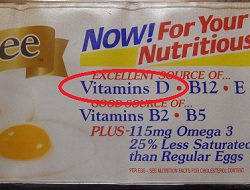
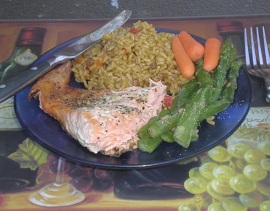
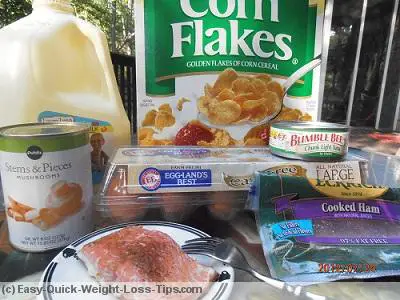
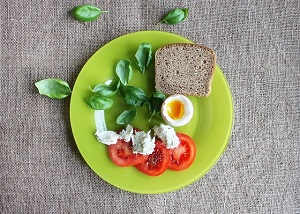
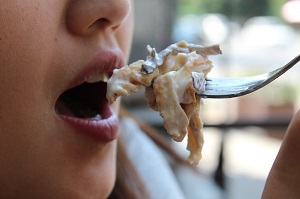
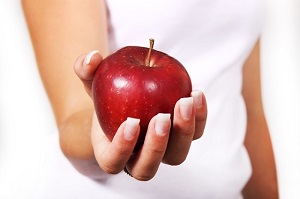
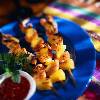
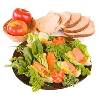
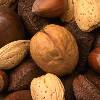
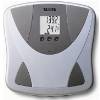
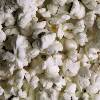
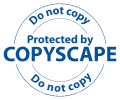
New! Comments
Have your say about what you just read. Leave me a comment in the box below.